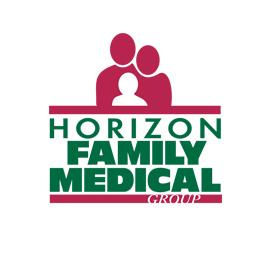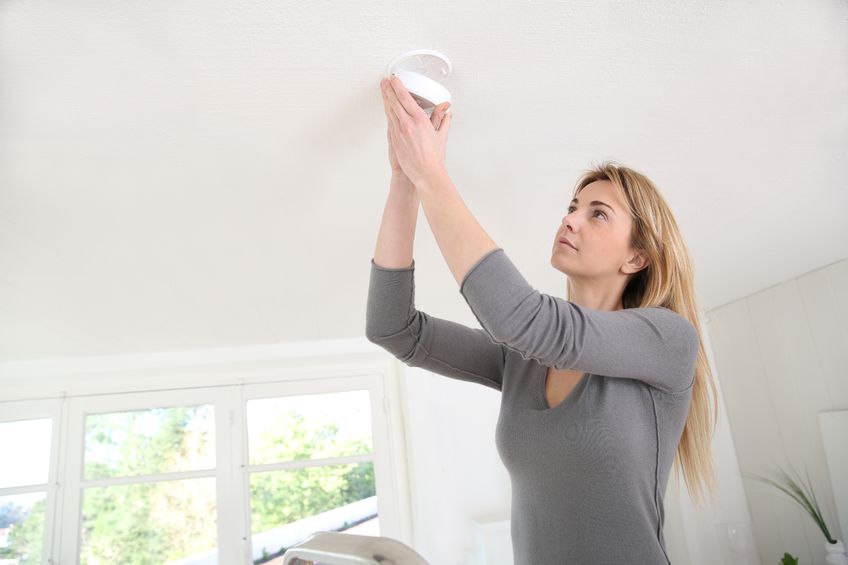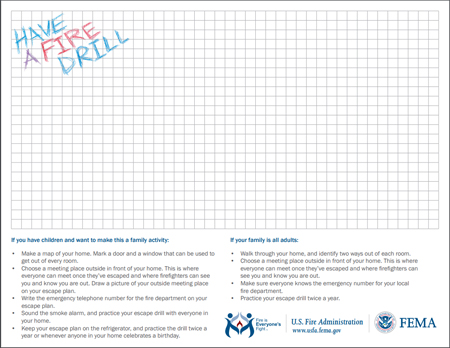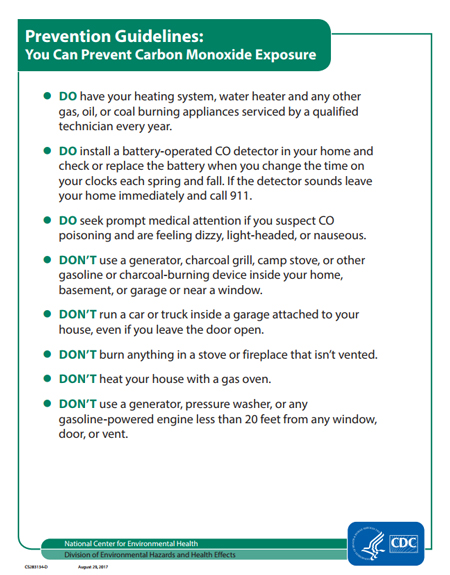Did you know that September is National Preparedness Month? This month is a great time to plan and identify ways to stay safe from fire and carbon monoxide.
Unfortunately, more than 150 people die each year from “accidental nonfire-related carbon monoxide poisoning.” [1] And sadly, more than 3,000 people die each year from fires. [2] But with a little planning and preparation, you can keep your family safe and ready in case disaster strikes.
Practice your fire escape plan
Practice makes perfect. Knowing the plan in case of a fire emergency, and then practicing that plan, increases your chances of survival. Here’s a great video from the U.S. Fire Administration explaining how:
You can also use this grid to map out the escape routes in your home. It’s a wonderful resource for your planning efforts:
You should also test your smoke alarms regularly. The U.S. Fire Administration actually recommends you test your fire alarms every month.
Prevent carbon monoxide poisoning
Carbon monoxide is sometimes called the silent killer. You can’t smell or see carbon monoxide, but the gas can build up and pose significant danger when a fuel-burning machine, like a furnace or generator, isn’t vented properly.
The U.S. Fire Administration says every home should have working carbon monoxide (CO2) detectors. (Many fire alarms today also have built-in CO2 detectors; check yours to know for sure.) These detectors, like your smoke alarms, should be tested every month.
Here are some DOs and DON’Ts about CO2 safety [3] from the Centers for Disease Control & Prevention (CDC):
From all of us here at Horizon Family Medical Group, stay safe, and be prepared.
Resources:
- https://www.usfa.fema.gov/downloads/pdf/co_safety_flyer.pdf
- https://www.usfa.fema.gov/data/statistics/
- https://www.cdc.gov/co/pdfs/guidelines.pdf



